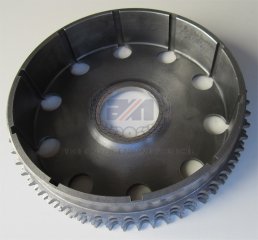- Joined
- Jan 1, 2024
- Messages
- 139
This may seem obvious or even trivial, but when trying to kickstart your Norton, have on substantial footwear, meaning a good boot with ankle support and a solid, strong sole. I wear tennis/athletic/running shoes sometimes just around home or working in the shop, just because they're comfy, but trying to KS the Norton in those type of shoes is a mistake, as others, I'm sure, already know. I'm seeing a common thread in most of these posts about kickstarting these old bikes, and that is most of the owners commenting are in the same age group and are right around my age (old, past citizen status) and are having similar physical issues (broken this, replaced that, and various surgeries) that all too often come with living this long. I also think it shows the demographic that own these bikes, ie, guys that owned these bikes back when they were young, and in some cases maybe still do, or those who dreamed of having one and for whatever reason couldn't, back in their youth, but are now in a position to own one. I can't imagine a person who had never had any interest in having a Norton for the first 70 years of their lives would just, out of the blue, decide one day, I think I'll buy a Norton motorcycle. I think the nostalgia factor is responsible for most of the ownership of these bikes, as let's face it, if we were being honest there are better motorcycles to be had from a strict riding standpoint. That doesn't mean I don't like mine, as I'd bet other owners do.

